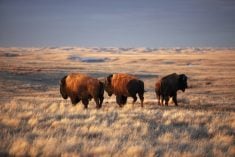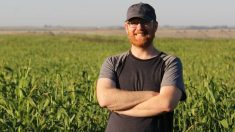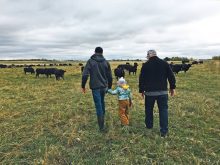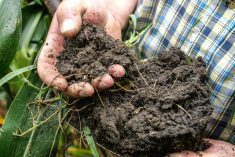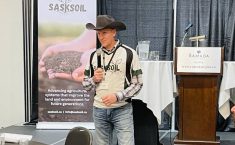Glacier FarmMedia — On his farm in North Dakota, Paul Overby plants cover crops, minimizes tillage and has eight different crops in his rotation.
He is fully committed to improving his soil health and the long-term sustainability of his business.
Other producers follow their own path, but Overby worries that thousands are casually using the word “regenerative” to describe what they do.
“It really bothered me to see a survey the other day, that said 70 per cent of farmers in the United States think they are regenerative farmers. No way,” said Overby, who farms near Wolford, south of the International Peace Garden.
Read Also

Cancer agency reclassifies another herbicide ‘probably carcinogenic’
The WHO’s cancer research agency has now put atrazine, a herbicide well known to corn growers, in the same potential-hazard category where the agency put glyphosate.
In November, Overby spoke at the Manitoba Forage and Grassland Association Regenerative Agriculture conference, an event held every fall in Brandon.
Following his speech, he acknowledged he couldn’t recall the source for that 70 per cent number — but it could well be accurate because regenerative agriculture, a term commonly used for at least seven years, still isn’t well defined.
Archer Daniels Midland, in its 2024 Regenerative Agriculture report, defines the term based on five principles of land management:
• Minimizing soil disturbance
• Maintaining living roots in the soil
• Continuous cover of bare soil
• Diverse crop rotations and diverse biology in the soil
• Responsibly managing nutrients and pesticides
If a farmer follows one or two of those practices, they might meet the definition of regenerative — or not.
The Manitoba Forage and Grassland Association tries to avoid the debate over what is and who is regenerative. It has hosted the regenerative agriculture conference since 2018 and takes an “open arms” approach where all producers are welcome, executive director Duncan Morrison says.
“If those 70 per cent of farmers think they are regenerative agriculture farmers and they want to take that next step to learn more, well, here we are,” he said during a coffee break at the event.
“Come learn more and decide what’s best for your farm.”
The 2024 conference attracted more than 250 people, so there are producers on the Prairies seeking more information about the practices and outcomes of regen ag.
Many at the Brandon event were younger than the average farmer in Western Canada.
“People in that demographic, 25-45, seem to be latching on to this,” Morrison says. “For them, this is a way they want to farm.”
Overby, who is not between 25 and 45, has been fully committed to soil health and doing things differently on his North Dakota farm for about seven years.
He followed reduced tillage and other sustainable practices, but in 2018 he signed onto the General Mills regenerative ag program. The information and technical assistance has changed his approach to grain production.
By improving soil health, Overby now believes it’s possible to use fewer pesticides, less fertilizer and make the plants “do some of the work” to find nutrients in the soil.
The concept of cutting input costs is a fundamental part of regenerative agriculture. Producers who use cover crops, integrate livestock into the farm and follow other principles of soil health are focusing less on maximizing yield and more on minimizing costs.
“Especially when it comes to inputs,” Morrison says. “It’s money that they’re not putting out that they’re considering as a saving (and more profit).”
There is no association in Western Canada that focuses on regenerative farmers. What does exist is a coalition of like-minded organizations, with members who are committed to soil health.
“There are a lot of synergies between our groups and we talk. We’re not big organizations, for the most part.”




